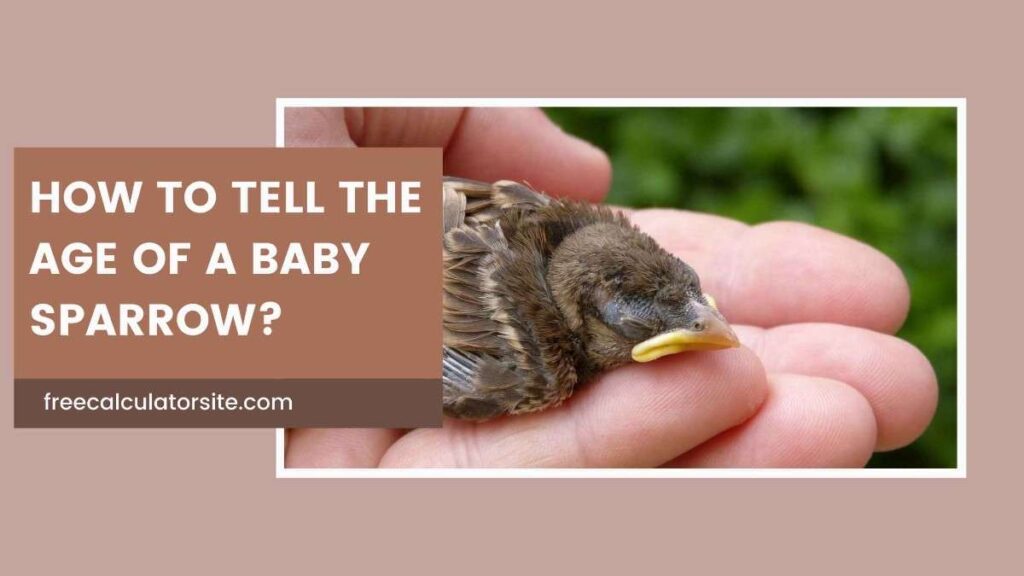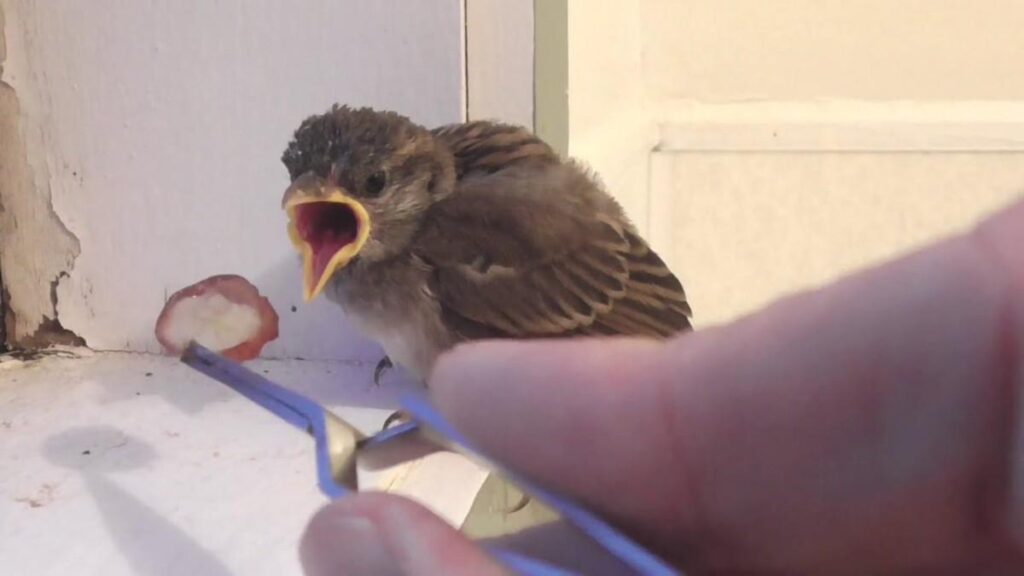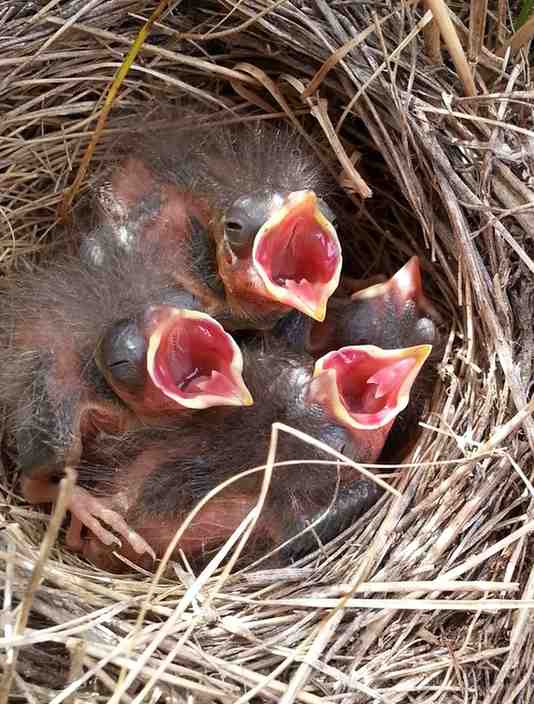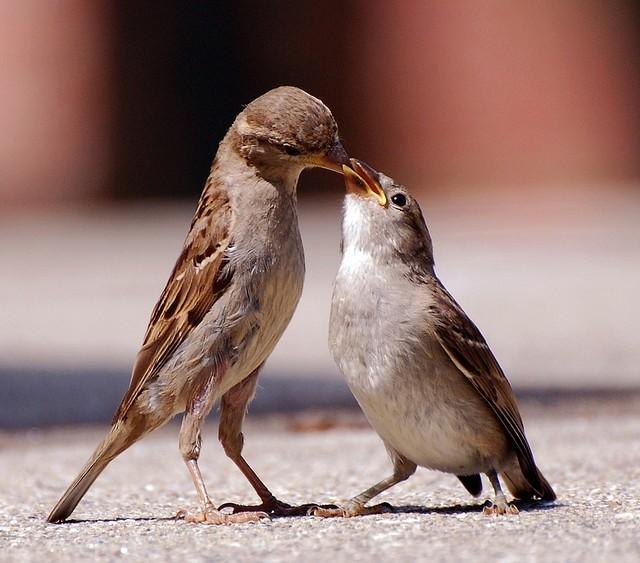Last updated on October 24th, 2024 at 09:44 pm

Baby sparrows are delicate little creatures, often nestled in the safety of their nests or hopping around in search of food.
If you’ve ever come across a baby sparrow, you might have wondered about its age.
Sparrows go through distinct developmental stages, and knowing how to identify them can help you understand their behavior, needs, and growth.
Whether you’re a bird enthusiast, a wildlife rescuer, or just curious, here’s a guide on how to tell the age of a baby sparrow.
1. Understanding the Life Stages of a Sparrow

Before diving into the details of how to determine a baby sparrow’s age, it’s important to understand the basic stages of a sparrow’s early life.
Sparrows, like many birds, follow a predictable development timeline, which can be divided into the following stages:
- Hatchling (0-3 Days Old): Newborn sparrows, or hatchlings, are completely dependent on their parents. They are usually blind, featherless, and unable to regulate their body temperature.
- Nestling (4-12 Days Old): During this stage, baby sparrows begin to grow feathers, open their eyes, and develop more mobility, though they still remain in the nest.
- Fledgling (13-18 Days Old): Fledglings leave the nest but are still not fully independent. They start practicing flying but may return to the nest for food and safety.
- Juvenile (2-4 Weeks Old): At this stage, sparrows become more independent, with most of their adult feathers developed. They can fly well but may still follow their parents for food.
2. Physical Clues to Determine the Age of a Baby Sparrow
Each stage of a baby sparrow’s development comes with physical changes that can help determine its age.
By observing features such as its eyes, feathers, and behavior, you can estimate the baby bird’s age.
Hatchling (0-3 Days Old)
- Size: Baby sparrows are tiny at this stage, usually no bigger than a walnut.
- Feathering: Hatchlings are completely naked, without any visible feathers.
- Eyes: The eyes are closed and will not open until around day four.
- Movement: They are largely immobile and rely solely on their parents for warmth and food.
If you find a baby sparrow that is still featherless with closed eyes, it is likely just a few days old and needs immediate warmth and feeding.
Also Read: How to Tell the Age of a Raccoon?
Nestling (4-12 Days Old)

- Size: The baby sparrow grows rapidly in this stage.
- Feathering: Pin feathers (small, tube-like sheaths) begin to emerge, particularly on the wings. By the end of this period, the feathers start to break out of the sheaths, and the bird begins to look fluffier.
- Eyes: The eyes typically open around the 4th or 5th day.
- Behavior: Nestlings remain in the nest, but they become more active. They might stretch their wings and move slightly within the nest.
A nestling sparrow is still fully dependent on its parents, but if its eyes are open and pin feathers are visible, it is likely between 5 to 10 days old.
Fledgling (13-18 Days Old)
- Size: By now, the sparrow has grown significantly, resembling a smaller version of its adult form.
- Feathering: Fledglings have almost full feather coverage, though the feathers may still look a bit patchy or underdeveloped. Flight feathers on the wings are present, but the tail feathers might be shorter.
- Eyes and Beak: The eyes are fully open, and the beak has lost much of the yellowish “gape” that baby birds have. However, some yellow may still be visible at the corners of the beak.
- Behavior: Fledglings leave the nest but may struggle with flight initially. They are often seen hopping or fluttering on the ground, making short attempts at flight.
If you encounter a baby sparrow that is fully feathered but awkward with flying, it is likely in the fledgling stage, around 14-18 days old.
Juvenile (2-4 Weeks Old)
- Size: Juveniles look very similar to adult sparrows, though they may be slightly smaller.
- Feathering: By this stage, sparrows have developed their adult feathers, though they may not yet have their final coloration. Juvenile sparrows often have a duller appearance than adult sparrows.
- Beak: The yellow gape at the sides of the beak is completely gone.
- Behavior: Juveniles are capable of flight but may still stick close to their parents, begging for food occasionally.
A fully feathered, independent sparrow with a slightly duller coat than an adult is likely a juvenile. This stage can last up to a month after leaving the nest.
3. Behavioral Clues to Estimate a Sparrow’s Age

Observing the baby sparrow’s behavior can also give insight into its age.
Here are a few behavioral clues to consider:
- Chirping for Food: Hatchlings and nestlings will open their beaks wide and chirp continuously for food when they sense a parent nearby. Fledglings may still chirp, but they can also flutter or hop toward a parent to beg for food.
- Flight Attempts: If the baby sparrow is hopping around and flapping its wings but struggling to fly, it is likely a fledgling. Fledglings practice flying for several days before becoming fully adept.
- Parent Interaction: Nestlings and fledglings rely heavily on their parents for food. If you observe a sparrow being fed by an adult, it’s probably younger than two weeks old. Juveniles, however, may still follow their parents for a week or two after learning to fly, begging for occasional food.
Also Read: How to Tell the Age of a Chicken?
4. Why Knowing the Age of a Baby Sparrow Matters
Knowing the age of a baby sparrow can help you make informed decisions, especially if you come across one in need of help.
For instance:
- Feeding: Very young hatchlings and nestlings need frequent feeding, often every 15-20 minutes, and cannot digest solid food yet. Fledglings and juveniles can eat more solid food but may need help finding it.
- Handling and Care: If you find a hatchling or nestling, it may need to be returned to its nest or taken to a wildlife rehabilitator. Fledglings, however, should be left alone unless they’re in immediate danger, as their parents are likely nearby.
- Flight Readiness: If you observe a fledgling, it’s important to give it space to practice flying rather than interfering unless it’s in harm’s way.
Conclusion
Telling the age of a baby sparrow involves careful observation of its physical characteristics and behavior.
From featherless hatchlings to clumsy fledglings, each stage offers unique clues that help you estimate their age.
Whether you’re helping a baby sparrow in need or just curious about its growth, knowing these stages can deepen your appreciation for these resilient little birds.

Akash Singh is a finance enthusiast who shares valuable insights on various calculators.
